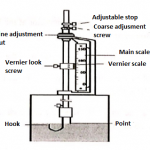How can a formal succession plan help companies like Parsons and Barrington Group minimize problems
How can a formal succession plan help companies like Parsons and Barrington Group minimize problems during a crisis involving the loss of a top manager? Should a succession plan be coordinated with a company’s career progression ladders? Why or why not?
A formal succession plan helps companies avoid problems when a top manager is suddenly lost for several important reasons. Most importantly, it avoids in-fighting in the company. When a top manager suddenly leaves a company, many people will automatically be interested in his or her job. If there is no clear succession plan, then many employees will suddenly be desperately fighting for leverage in the hiring process because they know time is of the essence. This can create unhealthy competition between employees and can even cause employees to spread rumors about each other or otherwise sabotage each other. This can easily cause a collapse in workplace productivity as people become unable to work effectively together, and spend time thinking about how to land the open job. A succession plan should be coordinated with a career progression ladder because if it is not, employees may feel unfairly treated because their expectations have been disappointed because the company assured them of a ladder track but then went back on that assurance. The company should be flexible, however, and should not simply automatically promote the next person in line. The company should make this policy clear when explaining the ladder track.





